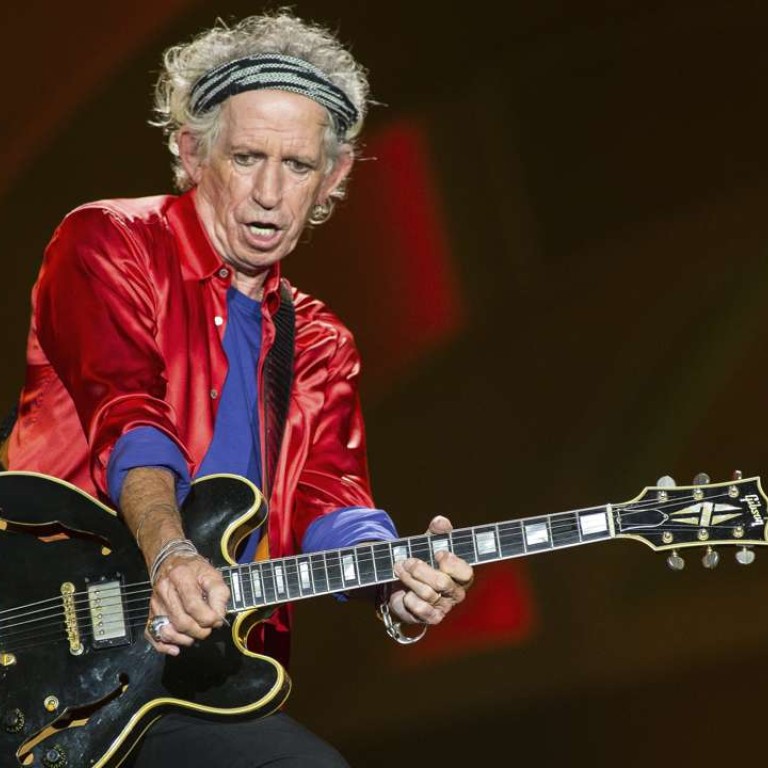
It’s only rock ’n’ roll but I like to read about it
From Keef’s crazy exploits to a one-hit wonder’s brief brush with fame, rock books come in all shapes and sizes. Here are 33 and a third of the best musical writing
Sex, drugs and rock ’n’ roll: These are the basic elements of a rock book. Make the band the Rolling Stones and you get “Life” by Keith Richards (2010), a memoir notable not just because the legendary guitarist lived through all those crazy exploits but because he remembers them. Focus in on New York’s punk scene and there’s nothing better than “Please Kill Me” (1996), the oral history by Gillian McCain and Legs McNeil; Jon Savage did British punk right in “England’s Dreaming” (1992). If you’re talking Riot Grrrls, the best history of the music and movement is Sarah Marcus’ “Girls to the Front” (2010).
There are endless variations. When I asked people about their favourites, the list quickly topped 100, with a couple that came back for several encores (thanks to the clear joy we all have in reading these books). These 33 and 1/3 books are those most essential in telling the story of rock ’n’ roll in all its glamorous and dirty glory.

There’s a long history of telling tales of overindulgence. Stephen Davis’ “Hammer of the Gods” (1985), about Led Zeppelin, set the bar for lurid stories – but whether the bar is high or low depends on your point of view (the band have disputed the book). Guitar god Johnny Winter’s highs and lows, including a set at Woodstock and his genuinely venal management, are outlined in “Raisin’ Cain” (2010) by Mary Lou Sullivan. Writing about the Alice Cooper band in “Billion Dollar Baby” (1974), Bob Greene chronicled over-the-top backstage shenanigans and infighting. Marianne Faithfull, a pop star with a string of famous exes, tried again and again to quit drugs, which she wrote about in her revealing memoir “Faithfull” (1994).

But there are the survivors. Patti Smith won the National Book Award for her memoir “Just Kids” (2010), which stops just short of her launching into rock stardom. Viv Albertine of the pioneering punk band The Slits roared back into public view after a long absence with her memoir “Clothes, Clothes, Clothes. Music, Music, Music. Boys, Boys, Boys.” (2014).

Novelists have tried to turn rock into art, too. There’s Jennifer Egan’s “A Visit From the Goon Squad” (2010), an innovatively structured Pulitzer Prize-winning novel built around the peripheries of the music business; Stacey D’Erasmo’s “Wonderland” (2014), about a forgotten indie sensation trying to return to the stage; Jonathan Lethem’s “You Don’t Love Me Yet” (2008), about making music and art on the margins in L.A.; and Don Delillo’s “Great Jones Street” (1973) is the story of how Bucky Wunderlick, a rock star modeled on Jim Morrison and Bob Dylan, tries to duck the burdens of fame.

Like Manzarek, Peter Hook was in a band with a powerful singer who died young; he waited more than 20 years after the demise of Joy Division to write about it in “Unknown Pleasures” (2013).
Often, those close to fame wind up telling the stories. With her husband Warren’s urging, Crystal Zevon gleefully dished the dirt with his friends for his biography, “I’ll Sleep When I’m Dead” (2008). In “I Slept With Joey Ramone” (2009), Mickey Leigh, the rocker’s brother, recalls the band’s early days and successes. His title was a play on groupie brags, and no groupie bragged with more delight than Pamela Des Barres in “I’m With the Band” (1987), putting Jimmy Page at the top of the rock star/lover heap. Sharing a different kind of secret, Tony Sanchez procured-and-told; he turned eight years of running errands for Keith Richards into “Up and Down with the Rolling Stones” (1979).

And it turns out people who like to read about rock exploits also like a little criticism in the mix. The most gonzo of all rock critics was, of course, Lester Bangs (accidental overdose), whose writings were collected posthumously in “Psychotic Reactions and Carburetor Dung” (1988). More academic and genuinely seminal is Greil Marcus’ “Lipstick Traces” (1989), one of the first books to turn a cool scholarly lens on the madness of rock and its place in the culture. Afterward came Simon Reynolds, whose books include the post-punk chronicle “Rip It Up and Start Again” (2006), which seems almost like a command for a list about books about rock ’n’ roll.
The Los Angeles Times
